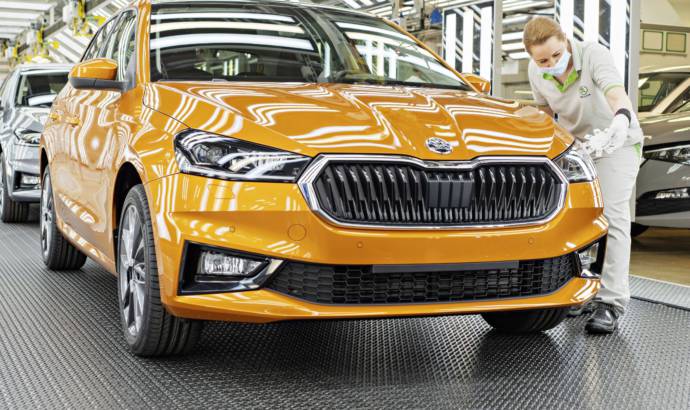Before IAA Munchen, where the public will see the new Fabia for the first time, Skoda started the production of the new generation in its Czech factory.
The ŠKODA Fabia is built on the same production line as the Scala and Kamiq model series. In the run-up to starting production, the Czech carmaker made adjustments to the assembly line as well as to the press and welding shops. Numerous complex and physically demanding production steps are now carried out by robots, which has enabled a high level of automation in the manufacturing processes.
The first-generation Fabia, launched in 1999, was one of the bestselling small cars, with more than 1.7 million units delivered. The second-generation model that followed in 2007 also surpassed the mark of 1.7 million units sold. Including the third generation, which debuted in 2014, more than 4.5 million Fabias have been delivered to customers around the globe.
For the first time, the model is based on the MQB-A0 platform from Volkswagen Group, which has made it possible to provide the car with significantly enhanced safety and comfort features. At a length of 4,108 mm, the new-generation model exceeds the four-metre mark for the first time, and at 1,780 mm wide, it offers even more space than its predecessor. The boot, which, in its predecessor, was already the largest in the segment, increased by 50 to 380 litres.
The new Fabia is a front-wheel drive and available with a manual gearbox or an automatic 7-speed DSG. There is a choice of five petrol engines from Volkswagen Group’s current EVO generation, which combine low emissions with increased efficiency and greater dynamics. The Fabia boasts a drag coefficient (cd) of 0.28, setting a record in the small car segment. This latest edition also features an array of assistance systems that were previously reserved for vehicles from higher segments.



